-
DHS chemical plant security program hobbled by problems, poor oversight
A DHS program responsible for the security of chemical facilities, such as the West Fertilizer Company plant in Texas, has been ineffective owing to a number of issues, leading federal investigators to wonder “whether it can achieve its mission, given the challenges the program continues to face.”
-
-
Female DNA found on Boston bomb fragments
FBI investigators found female DNA on fragments from the bombs used in the Marathon attack. The finding was first reported in the Wall Street Journal. Mikhail Allakhrdov, a man who some of Tsarnaev’s family members and friends described as the mysterious “Misha” who radicalized Tamerlan, said that he had not been in contact with Tsarnaev for several years, and that he never encouraged him to take up violence. Allakhrdov, a Ukrainian Christian who converted to Islam, admitted that a few years ago he was Tsarnaev’s “spiritual tutor.”
-
-
FBI looking for a “person of interest” who may have helped the Tsanaev brothers
Lawmakers with knowledge of the investigation into the Boston marathon bombing said over the weekend that law enforcement agencies are looking for a “person of interest” who may have been involved with the Tsarnaev brothers in preparing the attack. The lawmakers highlighted the fact that law enforcement agencies are not convinced that the brothers acted alone, without any help of one or two more people.
-
-
Jewish Security Summit discusses communal safety
Leaders from the Jewish Federations of North America (JFNA) and other Jewish organizations gathered last week at the first Jewish Communal Security Summit in New York to strategize with top experts in the field how best to keep the community safe.Security providers from around the country had a chance to learn about best practices in threat assessment and response in the current climate.
-
-
New fertilizer can be used to grow food – but not build bombs
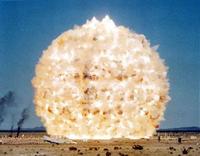
Ammonium nitrate fertilizer is used in agriculture, but when mixed with a fuel such as diesel, it is highly explosive. It was used in about 65 percent of the 16,300 homemade IEDs in Afghanistan in 2012.About 1,900 troops were killed or wounded in IED attacks in 2012, 60 percent of American combat casualties. There have been more than 17,000 global IED incidents in 123 countries in the past two years. Timothy McVeigh used ammonium nitrate in Oklahoma City in 1995. Scientists have developed a fertilizer that helps plants grow but cannot detonate a bomb.
-
-
Tamerlan Tsarnaev's name was on U.S. terror watchlist since 2011
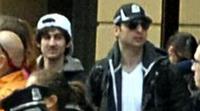
In March 2011, after being contacted by the Russian security services, the CIA added the name of Tamerlan Tsarnaev to the U.S. government’s terror watchlist. DHS secretary Janet Napolitano said that Tamerlan’s travel to Dagestan, and his arrival back in the United States, were “pinged” by the department. Leading lawmakers have raised questions about whether the U.S. intelligence community and law enforcement agencies have dropped the ball on the Tsarnaev brothers.
-
-
Atlanta losing DHS area security grant money
The city of Atlanta is losing DHS grant money used to strengthen the city’s ability to protect against a terrorist attack. Despite being home to recent high profile events such as the NCAA’s Final Four, federal records show the amount of money allocated to Atlanta through urban area security grants has dropped from $13 million in 2010 to $5 million last year.
-
-
Dzhokhar Tsarnaev had no firearms, explosives with him when captured
More details have emerged to shed light on the last few hours before 19-year old Dzhokhar Tsarnaev was captured hiding on a boat in Watertown, Massachusetts. Tsarnaev had no weapons or explosives with him in the boat where he was hiding. Boston police officers say that the heavy fire directed at the boat was probably the result of chaos of the moment. In a tense and charged atmosphere, one accidental shot could have caused what police call “contagious fire.” Tsarnaev sustained severe injuries, some of them to his neck and lower jaw, preventing him from talking. This led to rumors in the press that he tried to take his own life, but failed. We now know that he could not have tried to take his life because he had no firearms with him on the boat.
-
-
Experts: security of U.S. mass transit system must be tightened
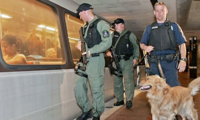
Counterterrorism experts are arguing that security on America’s mass transit lines must be tightened in light of the foiled plot to attack a Toronto passenger train. The plan to attack Canada’s transit system highlights security holes in America’s commuter system, and the challenges involved in securing this vast system.
-
-
Reactions to Boston bombing threaten passage of immigration reform
Reactions to the Boston Marathon bombings could become threaten the passage of immigration reform in Congress. Conservative Republicans who oppose an immigration reform along the lines offered by the bipartisan Gang of Eight have spoken out on the Hill, talk radio, and social networks saying that the bill should be reconsidered in light of the fact that the suspects were born outside the United States.
-
-
TSA reverses course on knives-on-planes policy
The Transportation Security Administration (TSA) has abandoned, for now, its proposal to allow travelers to carry small knives on airplanes owing to significant opposition from lawmakers, air marshals, law enforcement officials, and flight attendants.
-
-
Lawmaker wants to give FBI more power to track terror suspects
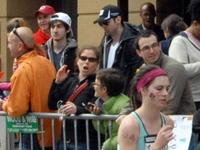
In 2011, at the request of Russia, the FBI questioned Tamerlan Tsatnaev to see whether he was affiliated with Chechen Islamic terrorist networks. The FBI’s investigation did not find anything, and his case was dropped. In the months following the questioning, Tsarnaev adopted more radical views, and gave expression to his militant views on his Facebook page. Even though his name was already in the FBI’s files, the agency’s ability to continue tracking him was limited by law. Senator Lindsey Graham (R-South Carolina) wants Congress to see whether the FBI’s authority to track extremist activity in the United States should be expanded.
-
-
Akron University professor teaches students on how to spot terrorist plots
Professor David Licate, a professor at the University of Akron, wants his students to be aware of those who may be buying bomb-making materials. In his class last Friday, Licate stressed to his homeland security course students that the community needs to look out for warning signs or suspicious behavior in an effort to prevent future tragedies.
-
-
Lawmakers want to learn more about the 2011 FBI investigation of Tamerlan Tsarnaev
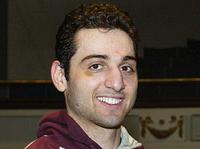
Representative Michael McCaul (R-Texas), chairman of the House Homeland Security Committee, and Representative Peter King (R-New York), the former chairman of the committee, sent a letter to FBI director Robert Mueller and Attorney General Eric Holder, seeking answers about the Tamerlan Tsarnaev investigation by the FBI.In 2011, Russian security authorities requested that the FBI question Tsarnaev on suspicion that he was affiliated with Islamic Chechen insurgents, but after interviewing Tsarnaev and doing a background check, the FBI concluded there was not enough to justify continuing tracking of cTamerlan.
-
-
Hagel reassures Israel, discusses large arms deal
U.S. Defense Secretary Chuck Hagel arrived in Israel Sunday for his first visit in the country as secretary of defense. Some elements in the pro-Israel lobby in the United States campaigned against Hagel’s nomination, and Hagel went out of his way to assure Israelis that his position on Israel is not what it was portrayed to be. One of the main reasons for Hagel’s visit is to discuss a major U.S. arms deal that would offer Israel missiles for its fighter aircraft – but also plus KC-135 refueling planes which could be used in a long-range strike on a country such as Iran. Until now, the United States refused to sell refueling tankers to Israel.
-
More headlines
The long view
How Male Grievance Fuels Radicalization and Extremist Violence
Social extremism is evolving in reach and form. While traditional racial supremacy ideologies remain, contemporary movements are now often fueled by something more personal and emotionally resonant: male grievance.
